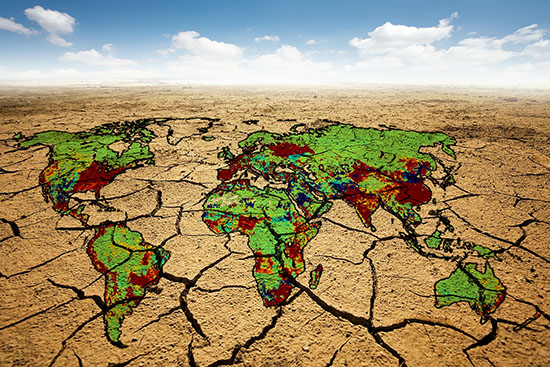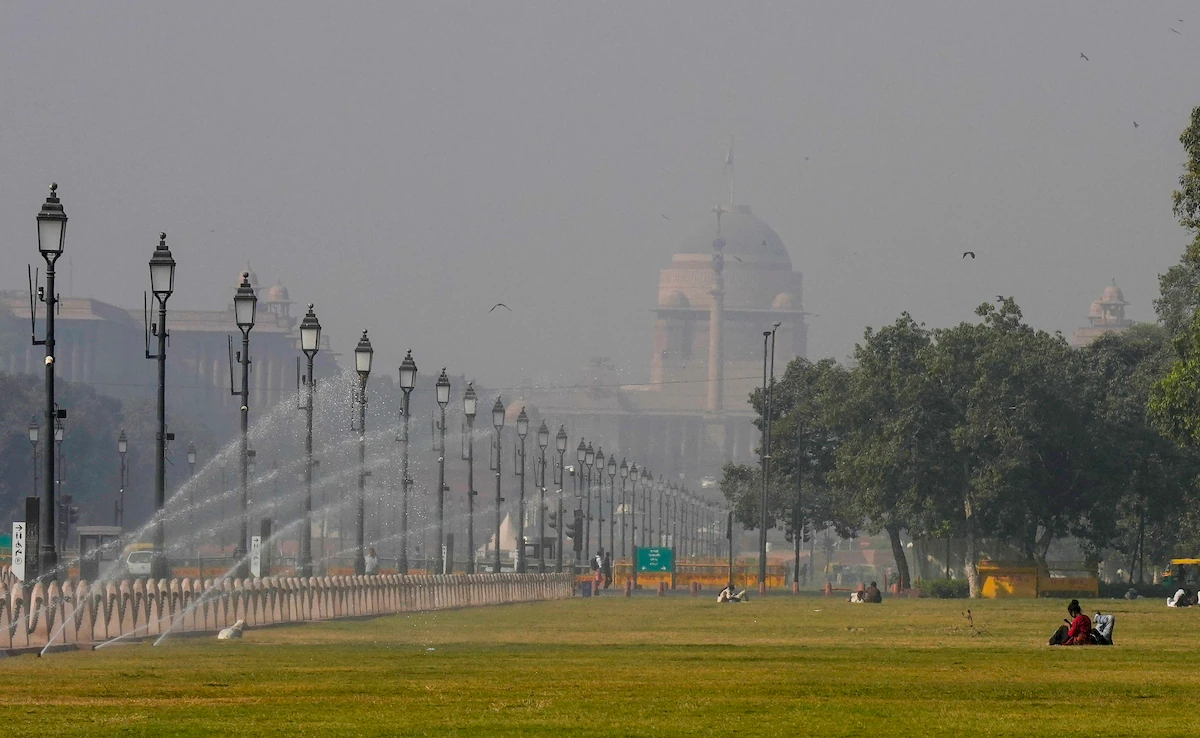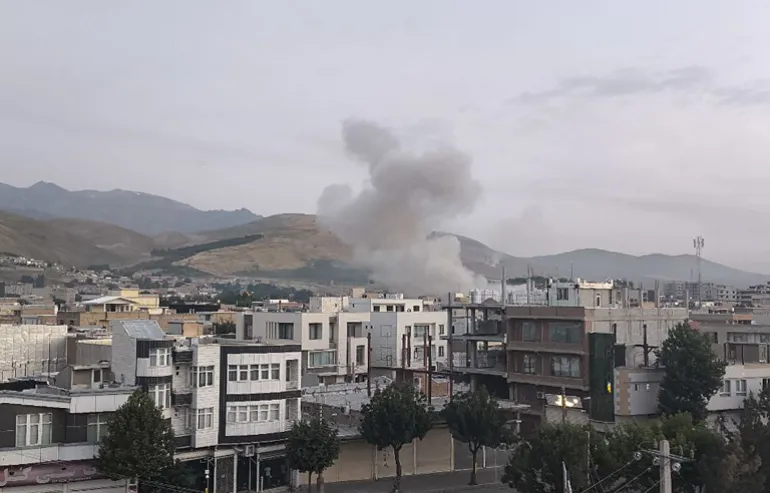- Courses
- GS Full Course 1 Year
- GS Full Course 2 Year
- GS Full Course 3 Year
- GS Full Course Till Selection
- Answer Alpha: Mains 2025 Mentorship
- MEP (Mains Enrichment Programme) Data, Facts
- Essay Target – 150+ Marks
- Online Program
- GS Recorded Course
- Polity
- Geography
- Economy
- Ancient, Medieval and Art & Culture AMAC
- Modern India, Post Independence & World History
- Environment
- Governance
- Science & Technology
- International Relations and Internal Security
- Disaster Management
- Ethics
- Current Affairs
- Indian Society and Social Issue
- NCERT- Science and Technology
- NCERT - Geography
- NCERT - Ancient History
- NCERT- World History
- CSAT
- 5 LAYERED ARJUNA Mentorship
- Public Administration Optional
- ABOUT US
- OUR TOPPERS
- TEST SERIES
- FREE STUDY MATERIAL
- VIDEOS
- CONTACT US
Global Water Scarcity in the Era of Climate Change: Challenges and Adaptation Strategies
Global Water Scarcity in the Era of Climate Change: Challenges and Adaptation Strategies

Introduction
Water scarcity is one of the most pressing issues of the 21st century, exacerbated by climate change and unsustainable consumption patterns. The growing imbalance between water supply and demand is leading to increased stress on global water resources, impacting economic development, food security, and environmental sustainability. The following article discusses the key insights from the study “Global water gaps under future warming levels” published in nature communications.
Understanding Water Gaps
Definition
- A water gap is defined as the difference between renewable water availability—from rain-fed rivers, lakes, and aquifers—and water consumption while ensuring sufficient environmental flows to sustain aquatic ecosystems.
Current Global Water Gap
- The baseline global water gap currently stands at 457.9 km³ per year (~458 billion cubic meters).
- Around 4 billion people experience water scarcity for at least one month annually.
- Nearly 50% of the world’s irrigated agriculture depends on unsustainable water use, increasing concerns over long-term food security and environmental degradation.
Climate Change and Projected Water Gaps
Climate change has intensified water scarcity by altering precipitation patterns, increasing evaporation rates, and reducing groundwater recharge. The study analysed water scarcity under two global warming scenarios:
Two Warming Scenarios
Researchers examined water gaps under two global temperature scenarios—1.5 °C and 3 °C above pre-industrial levels—to account for different policy pathways and emissions trajectories.
|
Warming Scenario |
Projected Increase in Water Gap |
Percentage Increase |
|
1.5 °C |
+26.5 km³/year |
+5.8% |
|
3 °C |
+67.4 km³/year |
+14.7% |
- 1.5 °C Warming: Temperature rise of 1.5 °C can significantly worsen water scarcity, adding over 26 km³ to the global water gap each year.
- 3 °C Warming: Temperature rise of 3 °C increase could add nearly 67 km³, substantially enlarging the existing gap.
Regional Disparities in Water Scarcity
The geographical distribution of water scarcity is not uniform. Physical factors like climate and topography intersect with socio-economic realities—such as population growth, industrial patterns, and irrigation expansions—to create uneven vulnerabilities around the globe.
Major Countries Facing Severe Water Gaps
|
Country |
Baseline (km³/year) |
+1.5 °C (km³/year) |
+3 °C (km³/year) |
|
India |
124.3 |
+11.1 |
+17.2 |
|
USA |
53.8 |
+2.3 |
+7.4 |
|
Pakistan |
35.8 |
+2.4 |
+11.7 |
|
Iran |
35.0 |
+0.5 |
+2.0 |
|
China |
27.2 |
+4.1 |
+7.3 |
- India: Faces the largest water deficit due to intensive irrigation in the Indo-Gangetic Plain and rapid urban expansion in cities like Delhi and Bengaluru, where declining groundwater levels have forced deeper bore-wells, increasing costs for farmers and households.
- USA: Baseline gap of 53.8 km³/year, with hot spots including California’s Central Valley and parts of the Southwest.
- Pakistan, Iran, and China: Over-reliance on groundwater and trans-boundary river systems makes these nations highly vulnerable to water crises.
Hydrological Basins at Risk
Basins are increasingly critical to water management because rivers often cross borders. The following table shows major basins with significant baseline deficits, along with projected shifts under warmer climates:
|
Basin |
Baseline (km³/year) |
+1.5 °C (km³/year) |
+3 °C (km³/year) |
|
Ganges-Brahmaputra |
56.1 |
+5.6 |
+11.8 |
|
Indus |
28.7 |
+3.5 |
+8.4 |
|
Mississippi-Missouri |
25.4 |
+2.4 |
+5.5 |
|
Nile |
22.2 |
–0.6 |
–0.7 |
- Ganges-Brahmaputra Basin: Climate-driven monsoon variability and glacier retreat threaten water availability, impacting millions in India and Bangladesh.
- Indus Basin: Highly dependent on Himalayan snowmelt, which is becoming more erratic due to rising temperatures.
- Nile: Some models project a slight decrease in water gaps under certain climate scenarios, but overall stresses remain acute due to competing demands from Egypt, Sudan, and Ethiopia.
- Mississippi-Missouri Basin: Faces increased drought frequency, disrupting agricultural productivity in the U.S. Midwest.
- Example: The shrinking of the Aral Sea in Central Asia, largely due to irrigation overuse, is a stark reminder of the consequences of mismanaged water resources
Key Drivers Behind Increasing Water Gaps
- Climate Change
- Warmer temperatures accelerate evaporation and often shift precipitation patterns, resulting in longer or more frequent droughts in certain regions.
- Population Growth and Urbanization
- Rapidly growing cities increase domestic, industrial, and energy-related water demands, placing higher demand on freshwater resources.
- Agricultural Expansion
- Irrigation accounts for about 90% of global water consumption. Efforts to meet rising global food needs inevitably push water extraction to new highs.
- Pollution and Overuse
- Industrial waste and untreated sewage contaminate freshwater sources, shrinking usable water supplies
- Industrial waste and untreated sewage contaminate freshwater sources, shrinking usable water supplies
Mitigation and Adaptation: Strategies for Sustainability
Sustainable Water Management
- Efficient Irrigation : Techniques such as drip irrigation, precision farming, and the cultivation of drought-resistant crops can substantially reduce agricultural water use.
- Reuse and Recycling: Wastewater treatment for irrigation and industry alleviates pressure on freshwater bodies, while desalination (E.g. Singapore) can support coastal areas under extreme stress.
- Watershed Conservation: Protecting or restoring forested and wetland areas helps maintain water tables and enhances natural filtration, ensuring better water quality and availability downstream.
- Resilient Infrastructure: Building multi-purpose dams, canal networks, and recharge structures can ensure year-round availability.
- Protect Ecosystems
Keeping certain volumes in rivers—known as environmental flows—is essential to maintain wetlands and fisheries, buffer floods, and ensure water quality downstream.
Policy and Governance Reforms
- Water Pricing & Regulations: Placing a suitable price on water can encourage efficiency and reduce waste. Stronger enforcement mechanisms ensure that industries and farms do not exceed safe withdrawal levels(E.g. Punjab ground water overuse).
- Trans-boundary Treaties: Countries sharing river basins—such as India and Bangladesh in the Ganges-Brahmaputra—benefit from coordinated water management frameworks that address upstream-downstream concerns.
- Data-Driven Decision Making: Relying on satellite imagery, IoT sensors, and AI analytics offers real-time insights into reservoir levels, crop water needs, and rainfall. Such data fuels more proactive and precise water management policies.
- Virtual Water Transfers: Importing water-intensive commodities from wetter regions can reduce local water stress in short term , a concept crucial to water-scarce countries like Saudi Arabia which depend on food imports to offset freshwater shortages. (Note -Virtual water transfers may shift the burden to exporters, requiring balanced trade policies.)
Technological Innovations
- Smart Water Grids: Leveraging AI-powered monitoring systems and IoT-enabled sensors can optimize water distribution and reduce losses.
- Cloud Seeding for Artificial Rainfall: In arid regions, employing cloud seeding technologies can enhance precipitation and alleviate local drought conditions.(E.g. Tested in UAE)
- Renewable-Powered Desalination: Solar-powered plants in Saudi Arabia(Ras Al Khair
Desalination Plant ) provide freshwater with minimal carbon emissions.
Community-Level Innovations
- A village in Uttar Pradesh—Manpur Ojha—has successfully implemented greywater recycling, reducing flooding and improving groundwater levels through:
-
-
- Silt Chambers: Filtering kitchen and washing water.
- Soak Pits: Allowing treated water to percolate into the soil.
- Kitchen Gardens: Using greywater for homegrown vegetables, cutting reliance on freshwater.
-
-
Conclusion
- Urgent Action Needed: Water gaps are projected to rise by 6% (1.5°C warming) and 15% (3°C warming), demanding immediate interventions.
- High-Risk Regions Must Prioritize Solutions: India, the Ganges-Brahmaputra Basin, and parts of China and the Middle East require targeted strategies.
- Community Innovations Provide Hope: Scalable grassroots solutions, like greywater reuse, can transform water conservation efforts.(E.g. Johads -Traditional Rainwater Harvesting in Rajasthan, India)
- A Water-Secure Future Depends on Global Cooperation: Technological advancements, policy reforms, and international treaties are vital for ensuring long-term water sustainability.
Water scarcity is a global challenge—addressing it requires collective responsibility, innovation, and sustainable governance.
|
Also Read |
|
| Public Administration Optional | |
| UPSC Monthly Magazine | Question Answer Practice For UPSC |




